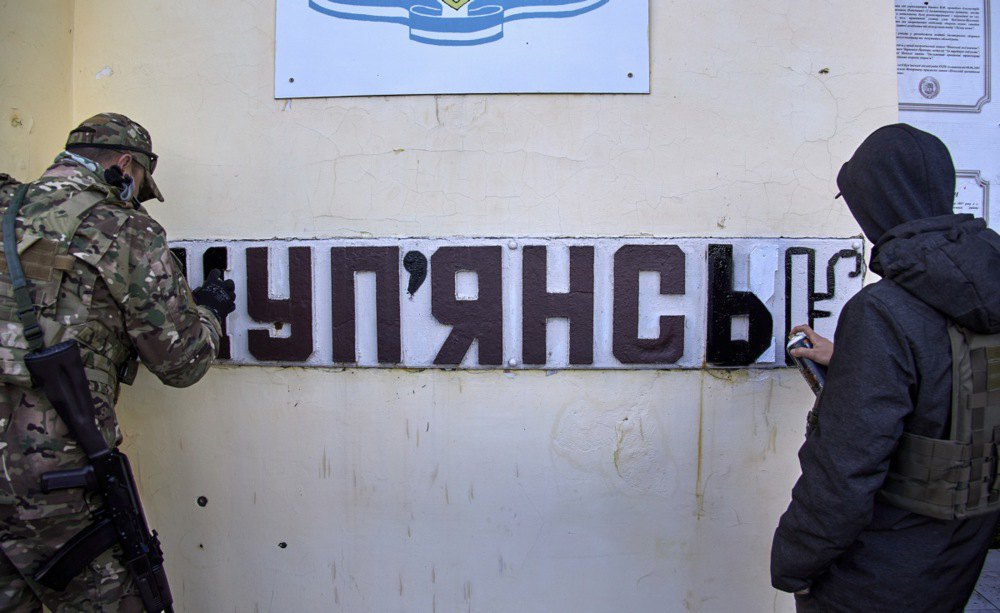Currently, the Kupyansk direction is one of the hottest spots on the entire frontline. After the de-occupation of Kharkiv oblast in September 2022, the invaders haven’t stopped trying to recapture the town that had been under their control for more than 7 months. Russians strive to make up for lost ground, so they are actively shelling Kupyansk and the nearby villages. Ukrainian authorities are evacuating people from several settlements to reduce the number of civilian casualties.
The strategic importance of Kupyansk to the Russian army
Kupyansk is a small town in the eastern part of Kharkiv oblast. Its population stood at a little less than 30,000 people before the full-scale invasion. Furthermore, Kupyansk is the second largest railway hub in the region (after Kharkiv) located just 40 kilometers from the border with the Russian Federation. This is what motivates the Russian army to attack the town again and again.
According to the Commander of Ukrainian Land Forces Oleksandr Syrskyi, Kupyansk is strategically important for the Russians because it serves as a large logistics base and transport hub. The enemy forces used the Kupyansk-Vuzlovy station to shift their reserves – this railway branch connects Kupyansk with Belgorod and Vovchansk.
The loss of Kupyansk significantly weakened the Russian army’s logistic and combat capabilities in the Kharkiv region. In order to regain control over Kupyansk, the enemy is trying to capture Synkivka – a deserted village situated a few kilometers from Kupyansk. The last five residents were evacuated from Synkivka in September 2023.
According to the head of Kupyansk town military administration Andriy Besyedin, Russian military have already used all possible types of weapons in their assault in Kupyansk district: multiple-launch rocket systems, artillery, guided air bombs (GABs). Due to the short distance to the frontline (a mere 7-8 kilometers), not only Kupyansk is under threat, but also several other district communities with a total population of more than 9 thousand people. They may have to be evacuated if the Russian Federation steps up the bombing.
One of the most tragic events in Kupyansk oblast happened on October 5, 2023, when the Russian “Iskander” missile hit the village of Groza and killed 59 civilians.
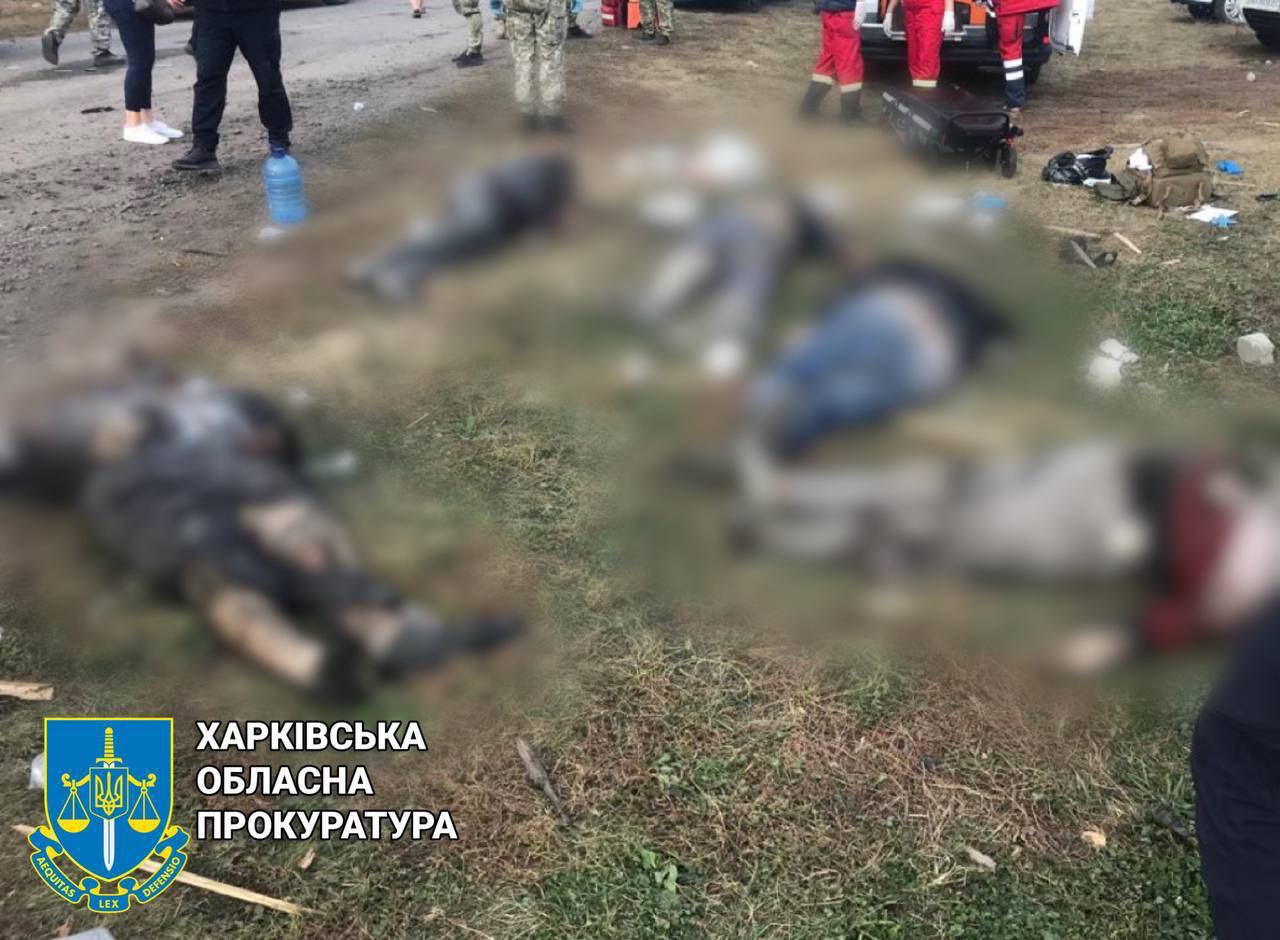
Photo: Kharkiv oblast Prosecutor’s Office
Victims of Russia’s missile attack on the village of Groza.
At the same time, Ukrainian military pointed out that the enemy forces haven’t made significant advance in the direction of Kupyansk over the past six months, despite launching attacks on a daily basis, although the Russians haven’t given up on their plan to reach the left bank of Oskil river that divides Kupyansk into two parts.
Russian occupation: collaboration and resistance
Kupyansk had been under Russian occupation since the first days of full-scale war till September 10, 2022. Occupation government of Kupyansk was headed by local mayor Hennadiy Matsegora, who won the 2020 election as a candidate from the “Opposition Platform — For Life” party. On February 27, 2022, Matsegora published a video address informing the local population that he “held talks with Russian soldiers and decided to cooperate with them”. In addition, he noted that the fate of Kupyansk residents depends on “how we prove ourselves”.
A few days after, Kharkiv oblast prosecutor’s office initiated criminal proceedings against Hennadiy Matsegora in response to alleged facts of encroachment on the territorial integrity and inviolability of Ukraine as well as high treason committed by a person in a position of authority (covered by part 2 of article 110 and part 1 of article 111 of the Criminal Code of Ukraine). When the Armed Forces of Ukraine liberated Kharkiv oblast, Matsegora fled to the Russian Federation. Currently, he occupies the position of a sports complex manager in Belgorod oblast.
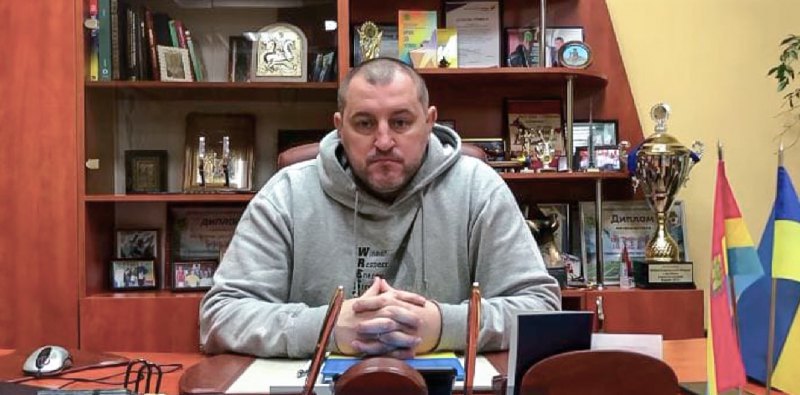
Photo: screenshot
Video address delivered by Hennadiy Matsegora on February 27, 2022.
During the period of Russian occupation, Kupyansk became the administrative center of captured territory of Kharkiv oblast that was out of Ukrainian government control. In June 2022, the invaders established the so-called “district state administration” under the leadership of Maksym Gubin, who previously served as the head of occupation government in the village of Kozacha Lopan.
On March 1, 2022, about a thousand residents of Kupyansk took part in a peaceful protest against the Russian army that had already captured the city by that time. The protest was organized by a member of town council and ATO veteran Mykola Masliy. Later that same day, the politician was kidnapped, and his whereabouts remain unknown up to now. Masliy’s relatives and human rights defenders are trying to find out about his subsequent fate. They filed a lawsuit against Russia in the European Court of Human Rights.
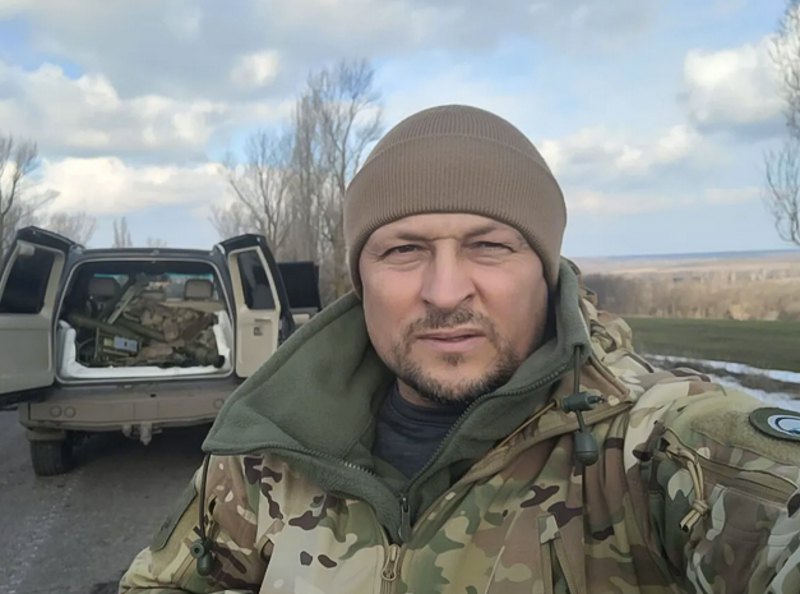
Photo: facebook
ATO veteran Mykola Masliy
A similar fate befell local blogger Serhiy Stroyev, who was kidnapped on the outskirts of Kupyansk in April 2022. The Russians still refuse to disclose any information about his whereabouts. Cases of holding Ukrainian civilians captive without filing formal charges against them are not unique. According to human rights ombudsman Dmytro Lubinets, 140 civilian prisoners were released from captivity and returned to Ukraine within the framework of prisoner exchanges, but the fate of 25,000 other missing persons remains unknown. Red Cross officials stated that there are 763 confirmed cases of detention of Ukrainian civilians, but the actual number of detainees is impossible to calculate since Russia deprives the international organizations of access to detention facilities.
Over a six-month period, the occupation authorities of Kupyansk district managed to organize the export of agricultural products to Russia and the so-called “LPR” and “DPR”. Local school graduates received Russian general education certificates, Ukrainian curricula were replaced by Russian teaching programs, Russian books were brought into the libraries instead of confiscated Ukrainian literature. Furthermore, Russian passport offices were opened in Kupyansk and Vovchansk, and a Russian mobile operator began to provide cellular communication services in the district.
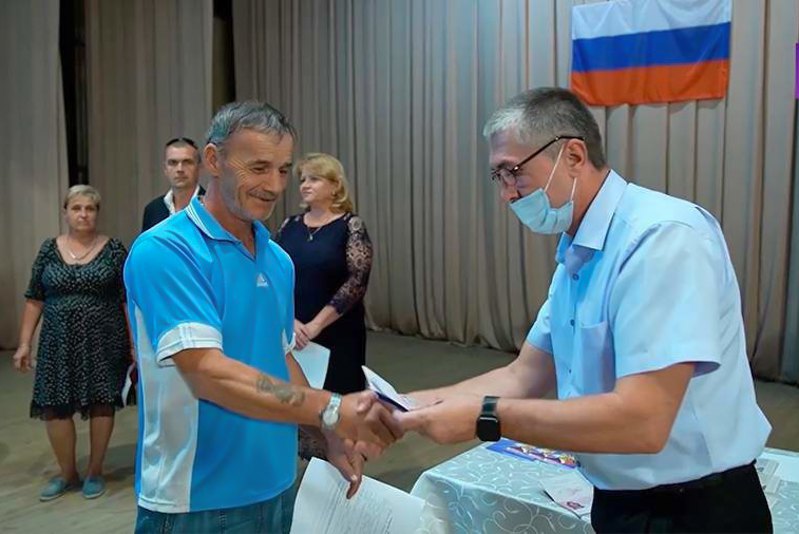
Photo: dialog.ua
Issuance of Russian passports to residents of occupied Vovchansk
In August 2022, the people’s deputies representing “United Russia” party announced their intentions to hold a referendum on the accession of Vovchansk and Kupyansk districts to the Russian Federation. This “free expression of the will” was scheduled for October 20. Russian deputies and the first deputy chief of staff of the presidential administration of the Russian Federation Sergey Kiriyenko (who also manages Russia’s information policy in the occupied territories) visited Kupyansk multiple times and reassured the locals that “Russia will stay here forever”.
However, two months later, the Armed Forces of Ukraine liberated Kupyansk, so the occupiers had to move the “capital of Kharkiv oblast” to Vovchansk. A week after that, the Ukrainian army liberated Vovchansk as well, and the majority of collaborators fled to Russia. Before the retreat, the occupiers led by the “head” of Kupyansk district Maksym Gubin forcibly transferred some of the children to Russia. Gubin escaped to the Russian Federation in September 2022.
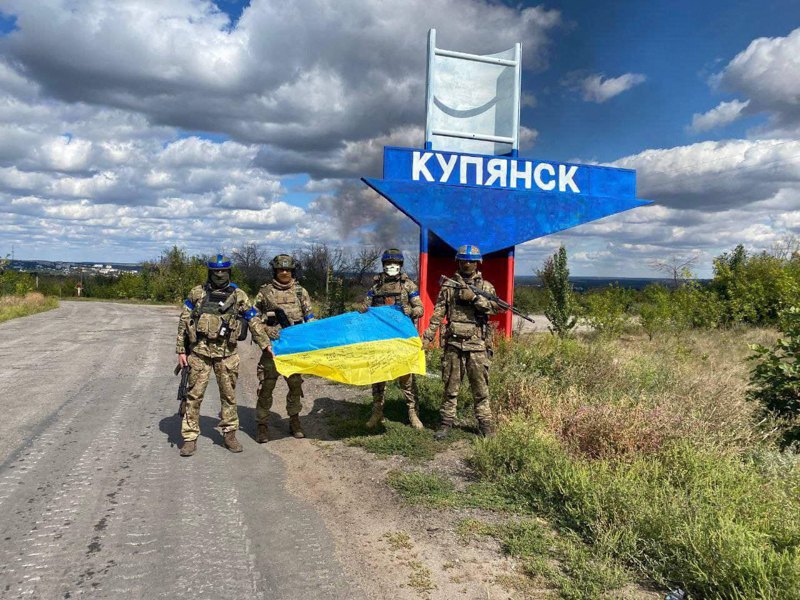
Photo: facebook/Roman Sinicyn
Ukrainian military standing near the Kupyansk town nameplate immediately after liberation
Many representatives of the occupation authorities continued to perform activities even after fleeing Ukraine. In particular, Vitaly Ganchev (lieutenant colonel of the “LNR” police and the head of the so-called “administration” of the temporarily occupied territory of Kharkiv oblast) calls himself a legitimate representative of Kharkiv oblast authorities “in exile” having its official seat in the Belgorod oblast of the Russian Federation.
In May 2023, Russian propagandists published a “documentary” film “The Path Home”, in which they claim control over part of the Kharkiv oblast – primarily over the Kupyansk district, which is currently the frontline zone where no one lives in the destroyed villages.
Scale of destruction and evacuation
According to legitimate authorities of Kupyansk, 60% of all buildings in the town were either destroyed or damaged. All large industrial facilities were shut down, including the meat processing plant, the milk canning plant, the bread factory “Kulynychi”, and the fishing enterprise “Norven”.
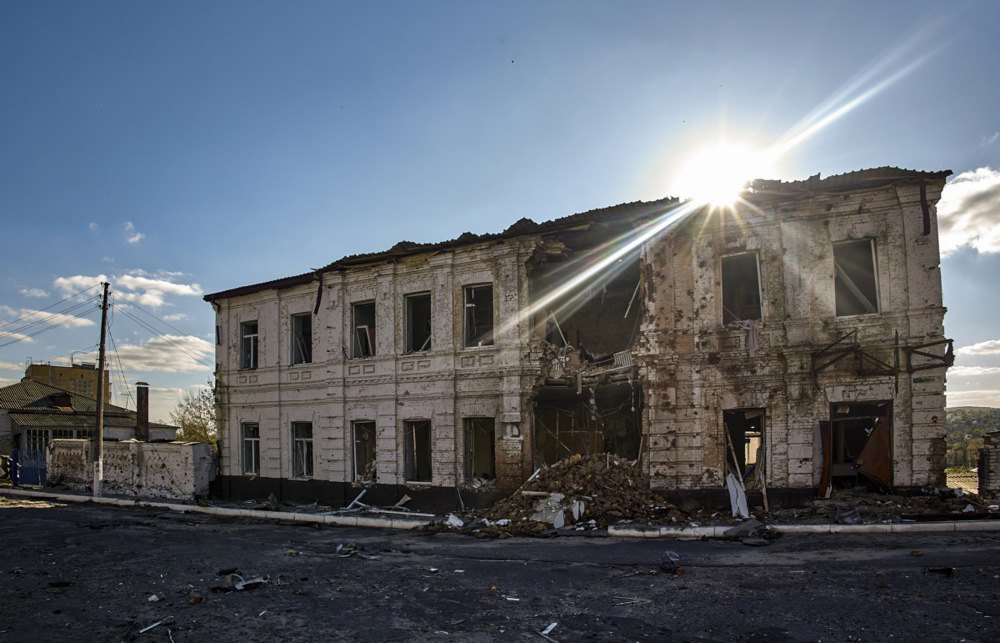
Photo: EPA/UPG
Ruined buildings of Kupyansk
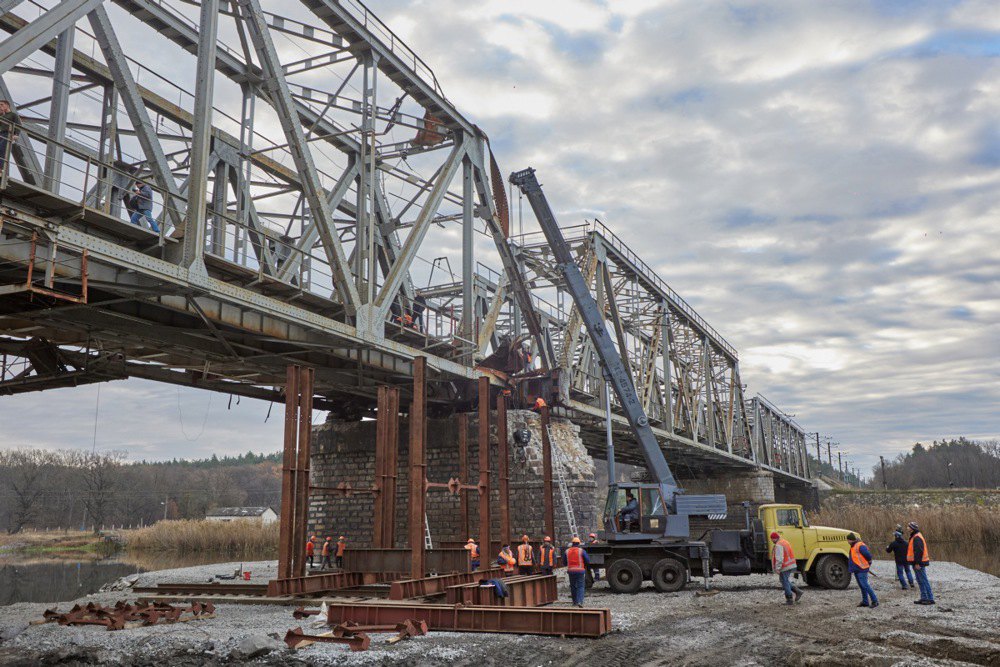
Photo: EPA/UPG
Restoration of railroad bridge that connects Kupyansk and Kharkiv, November 2, 2022.
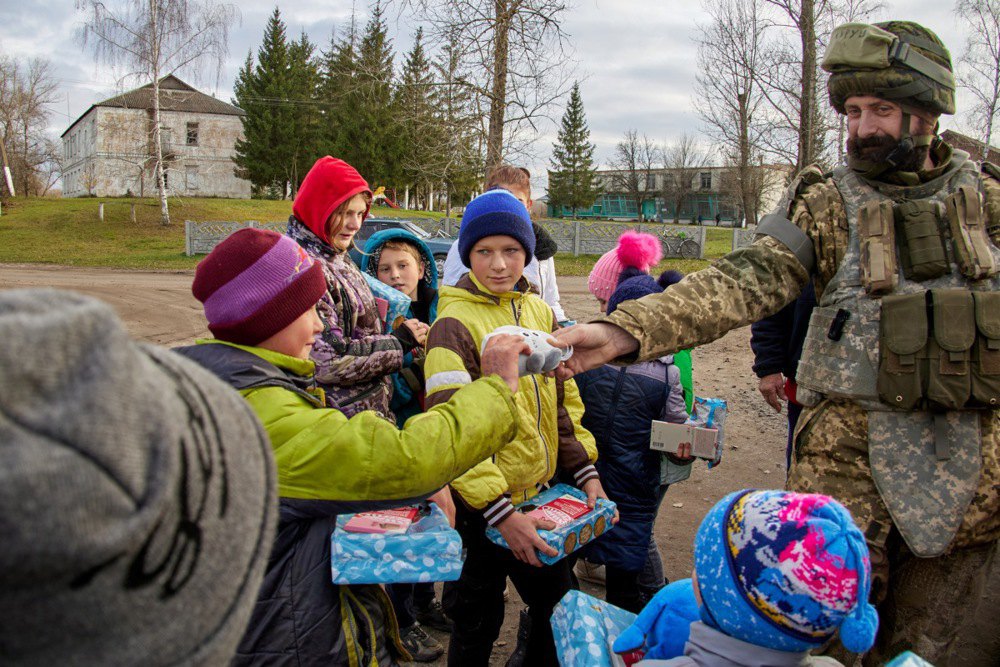
Photo: EPA/UPG
Ukrainian military and volunteers dish out the goodies to children during the distribution of humanitarian aid to local residents of liberated Kupyansk, Kharkiv oblast, November 7, 2022
As of April 2023, the population of Kupyansk stood at 11,000 (before the start of full-scale war, 27,000 people lived in the town). By November 2023, it had shrunk to less than half of its former size and was estimated at 5,000, of which 236 were children. The population of Kupyansk district also plummeted – from 135 to 46 thousand. The majority of local residents moved out either because of Russian invasion in the winter-spring 2022 timeframe or due to constant shelling attacks of the Russian army following the liberation of Kupyansk district in September 2022. The villages of Vilkhuvatka, Velykyi Burluk and Dvorichna communities found themselves in a particularly critical situation due to impossibility of restoring power to the customers under relentless shellfire.
On October 2, 2023, Kharkiv oblast military administration decided to conduct mandatory evacuation of nearly 300 children and their families in 66 settlements of Kupyansk district, in particular, those situated in the territory of Kupyansk, Kindrashivka, Dvorichna and Vilkhuvatka communities. Each of the evacuated children was accompanied by at least one parent. They were accommodated in the dormitories located all over Ukraine. The main problem in organizing effective evacuation was the reluctance of significant part of the population to leave dangerous areas, which is why this process wasn’t carried out on a massive scale. In some settlements, Kupyansk civil-military administration conducted evacuation after considering individual requests from local residents.
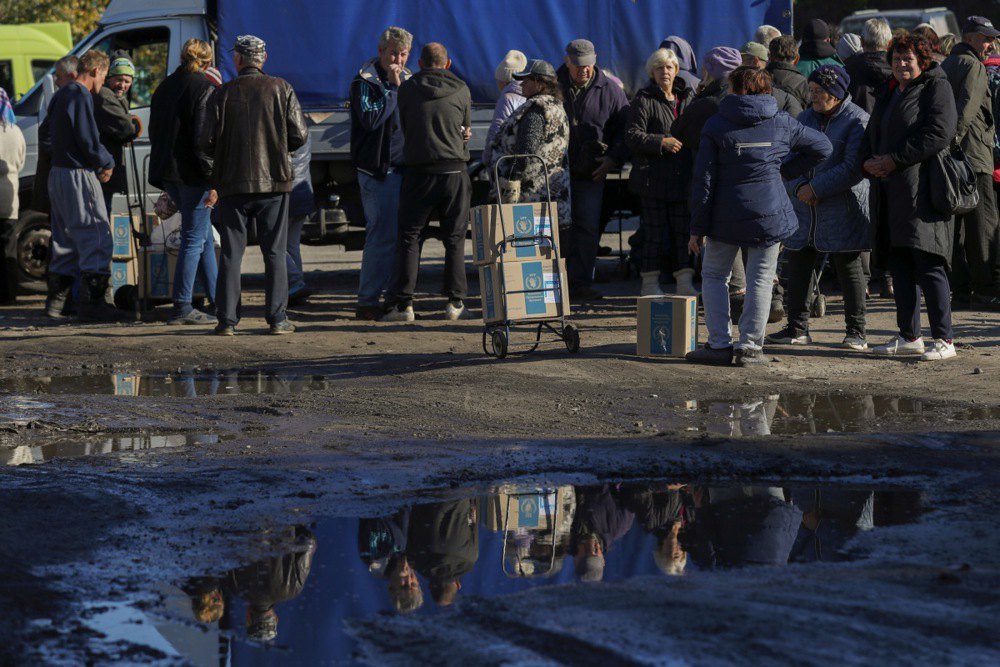
Photo: EPA/UPG
Residents of the recently liberated Kupyansk receive humanitarian aid, October 15, 2022.
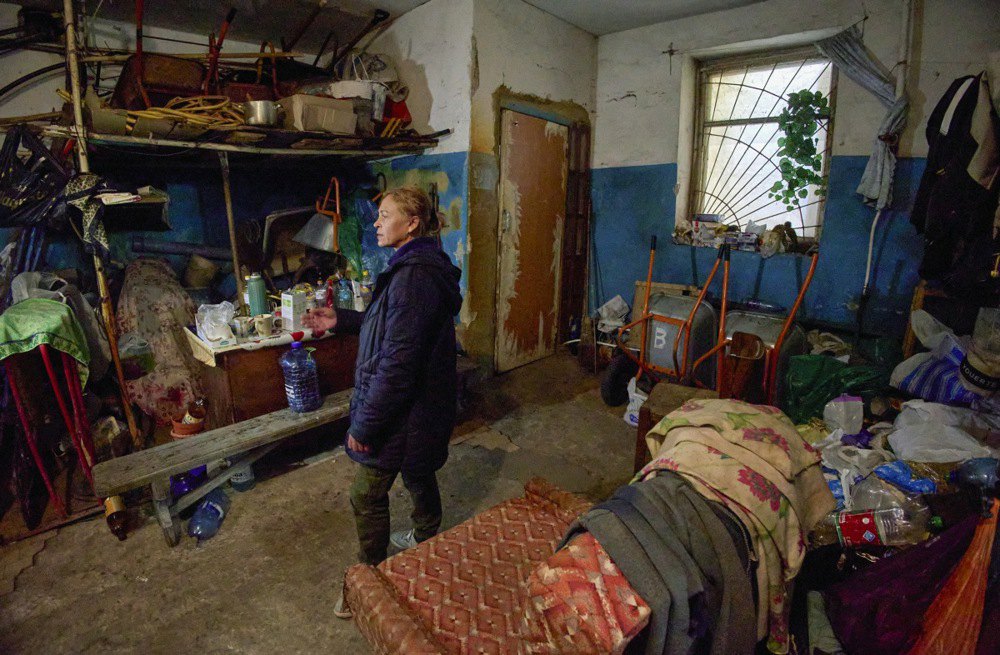
Photo: EPA/UPG
A woman stands in the middle of the basement of her house, where she and her neighbors hide from shelling attacks, Kupyansk
More than four thousand residents of local community (mostly elderly people) refused the offer to evacuate and submitted corresponding refusal letters – mainly out of the desire to stay at home and look after the house property. According to the head of evacuation department of the coordination humanitarian center under Kharkiv oblast military administration Oleh Ivanov, about 50-60% of the population of the frontline zone refused to evacuate to safer places.
The director of civil protection department of Kharkiv oblast military administration said that “approximately 30% of local residents moved out on their own without the help of state authorities or volunteers”. According to Oleh Syniehubov, an average of 150 people are evacuated from Kupyansk district every week. As of mid-January 2023, about 3,000 people, including 279 children, remain in Kindrashivka and Kurylivka communities that are suffering from constant shelling attacks.
Another problem is the arbitrary return of residents to the frontline zone. In November 2023, the National Police recorded 20 such cases. Currently, people with children are prohibited from coming back to the settlements located in Kupyansk district.
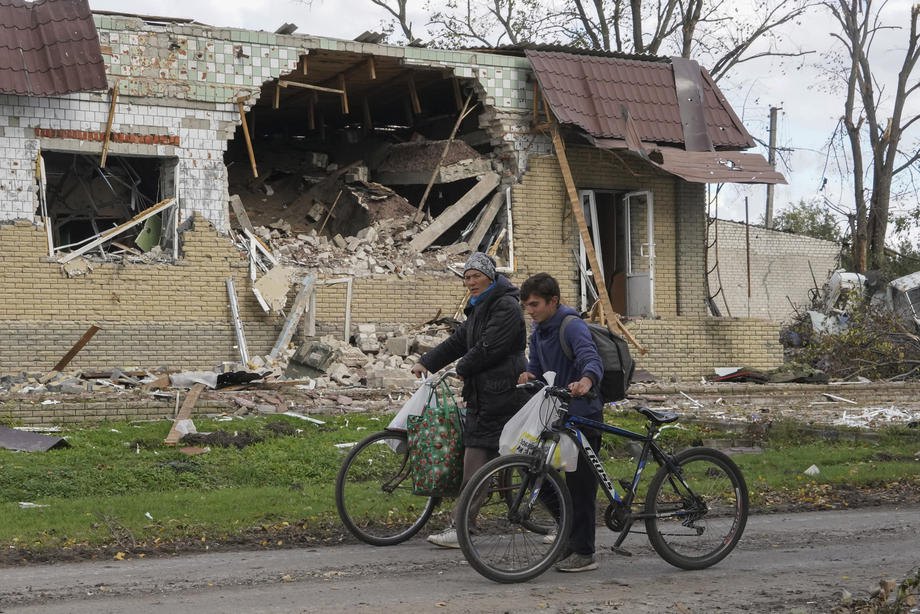
Photo: EPA/UPG
In November 2023, Oleh Syniehubov stated that the officials of Kharkiv oblast military administration are considering the possibility of mandatory evacuation of families from certain parts of Kupyansk that suffer the most from Russian shelling, but the final decision hasn’t been made yet.
The departure and forced evacuation of the population significantly complicated the work of local self-government bodies. The staff size of the apparatus of Kupyansk town council decreased from 189 to 40 people: some employees left for the Russian Federation, others relocated to other regions of Ukraine after de-occupation. The chief of Kupyansk civil-military administration Andriy Kanashevych noted that almost all heads of departments of municipal council and the directors of communal enterprises that agreed to collaborate with Russian occupiers have fled the town.
The current security situation in Kupyansk and the risks facing its residents are fully determined by the fact that the town is located only 7-8 kilometers from the frontline. According to Oleh Syniehubov, fortifications around Kupyansk are being constructed on the model of fortification system that was used to defend Kharkiv at the beginning of full-scale invasion: several concentric rings of defensive structures were built around the town to impede the advance of the Russian army. We hope that these fortifications will help Kupyansk survive the assault, and then the town will become a springboard for the Ukrainian counteroffensive on Luhansk and Donetsk oblasts – it is time for them to return home.
